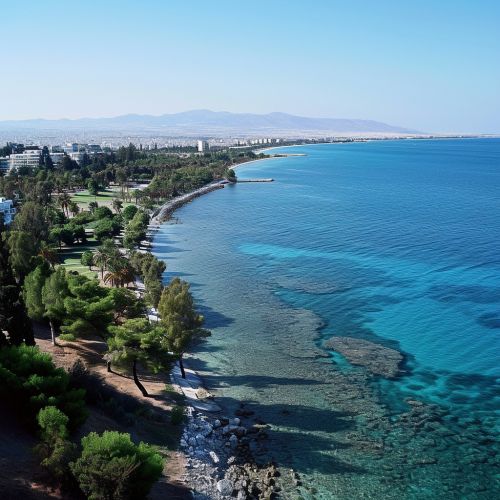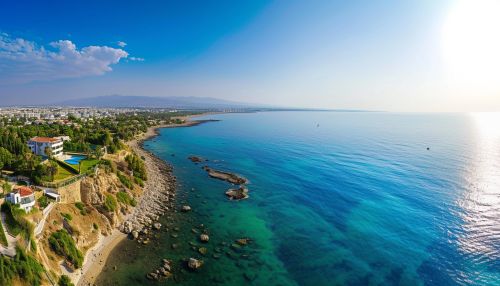Limassol
Geography
Limassol is the second largest city in Cyprus, located on the southern coast of the island. It is geographically situated between two ancient cities, Amathus and Kourion, and has been inhabited since the Bronze Age. The city is surrounded by hills to the north and the Mediterranean Sea to the south.


History
The history of Limassol is closely connected to the history of Cyprus as a whole. The city has been under the rule of various empires throughout the centuries, including the Byzantine, Frankish, Venetian, Ottoman, and British Empires. Each of these periods has left its mark on the city, contributing to its rich cultural and architectural heritage.
Ancient History
The area around Limassol has been inhabited since the Bronze Age, with the earliest known settlement dating back to 2000 BC. The ancient city of Amathus, located to the east of modern Limassol, was one of the original city-kingdoms of Cyprus. It was known for its worship of the goddess Aphrodite and the infant god Adonis, and was a significant centre of trade and commerce.
Medieval Period
During the Middle Ages, Limassol became an important hub for trade and commerce due to its strategic location. The city was under the rule of the Byzantine Empire until the 12th century, when it was conquered by Richard the Lionheart during the Third Crusade. It then came under the control of the Knights Templar, and later the Knights of St John.
Ottoman Rule
The Ottoman Empire took control of Cyprus in 1571, and Limassol, like the rest of the island, came under Ottoman rule. During this period, the city's infrastructure was improved, and many mosques and baths were built.
British Rule and Independence
Cyprus became a British colony in 1878, and Limassol experienced significant growth and development during this period. The city's port was expanded, and many new buildings were constructed, including schools, hospitals, and government buildings. Cyprus gained independence from Britain in 1960, and Limassol has continued to grow and develop since then.
Economy
Limassol is the economic hub of Cyprus. The city's economy is diverse, with sectors such as shipping, tourism, and services playing significant roles. Limassol is home to the largest port in Cyprus, which serves as a major transit point for goods entering and leaving the Middle East and Southeast Europe.
Shipping
The shipping industry is a major contributor to Limassol's economy. The city is home to many shipping companies and the largest port in Cyprus. The Limassol Port handles a significant amount of cargo and passenger traffic, and is a major hub for the transshipment of goods.
Tourism
Tourism is another important sector in Limassol's economy. The city is known for its beautiful beaches, historic sites, and vibrant nightlife. It attracts tourists from around the world, contributing to the local economy and providing employment opportunities.
Services
The services sector, including banking, insurance, and legal services, is also a significant part of Limassol's economy. The city is a major business hub, with many international companies having their regional headquarters in Limassol.
Culture
Limassol is known for its rich cultural heritage and vibrant arts scene. The city hosts several annual festivals and events, and is home to numerous museums and art galleries.
Festivals and Events
Limassol is famous for its annual Carnival festival, which is one of the most significant cultural events in Cyprus. Other notable events include the Limassol Wine Festival, the Limassol International Documentary Festival, and the Limassol Marathon.
Museums and Art Galleries
The city is home to several museums, including the Limassol Archaeological Museum, the Cyprus Medieval Museum, and the Limassol Municipal Art Gallery. These institutions showcase the city's rich history and cultural heritage, and provide opportunities for locals and tourists to engage with art and history.
